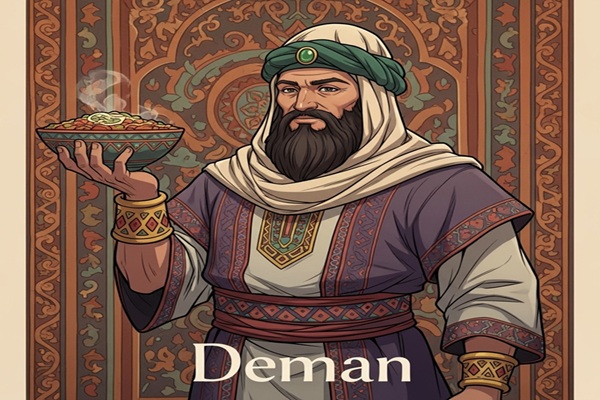
You might think “đeman” is just another exotic word—but it’s actually a cultural chameleon. Across Eastern Europe, Vietnam, and Southeast Asia, đeman takes on entirely different roles: from mythical guardians to poetic performance and even a kitchen spice. All these versions reveal how humans use symbols to connect, create, and discover meaning.
Ready to explore? Let’s take a guided tour through the many faces of đeman and uncover what it tells us about ourselves.
1. What Is Đeman?
Đeman is a cultural rainbow—a single term pointing to:
-
A guardian spirit in Eastern European folklore
-
A performance art blending music, poetry, and dance in Vietnam
-
A culinary spice similar to bay leaf across Southeast Asia
Despite these diverse interpretations, each version shares common themes: respect for tradition, creative expression, and meaningful connection.
2. Đeman in Eastern European Folklore
Guardian of the Forest
In Slavic and neighboring traditions, đeman is often portrayed as a forest spirit who balances good and evil. This mythical being fosters harmony and punishes disrespect.
Keeper of Moral Balance
Imagine a farmer who chops down a sacred tree and suddenly faces a strange twist of luck. That’s đeman’s message: honor nature and ancestral customs, or face the consequences.
Why It Matters
These stories teach respect—for elders, land, and community—using a supernatural character to make moral lessons clearer and more memorable.
3. Đeman as Vietnamese Performing Art
What It Looks Like
Vietnamese đeman is a layered stage art: music (đàn tranh and flute), poetry, and dance interweave to bring emotional stories to life.
Storytelling to the Core
Performers use this form to explore love, struggle, identity, or social values—creating an immersive experience that invites shared reflection.
Why It Matters
This art celebrates collective memory, connecting performers and audience in a shared cultural conversation—and a reminder that story is a powerful bonding tool.
Also Read : маријин трг: The Heart of Belgrade’s Urban Landscape
4. Đeman on the Southeast Asian Menu
Meet the Spice
Here, đeman refers to an aromatic leaf—similar to Indonesian bay leaf—with juicy notes of citrus, eucalyptus, and cloves.
How It’s Used
From curries to soups and stews, đeman adds depth and ritual meaning. It’s not just a flavor enhancer—it represents hospitality and prosperity.
Health and Flavor
Rich in antioxidants and digestive benefits, đeman spices up everyday meals and elevates cooking into cultural expression.
5. The Common Thread: Symbolism & Story
Despite their differences, all versions of đeman do the same work:
-
Connect people—to spirits, community, or table
-
Teach respect—for nature, culture, or food traditions
-
Celebrate heritage—each in a unique but humanly meaningful way
That’s why đeman isn’t just a term—it’s a cultural window.
6. Why Đeman Still Speaks to Us
Cultural Wisdom
These stories and practices help us remember our connection to land, society, and each other—even in a digital age.
Hybrid Understandings
Đeman shows how traditions evolve: a myth turns into performance, which becomes a ritual, and even flavors meals—carrying old meaning into new forms.
Global Relevance
Our world is more connected than ever. Preserving and adapting symbols like đeman helps us maintain identity and understanding in shared creative spaces.
7. What We Can Learn from Đeman Today
-
Find your inner guardian. Like the folklore đeman, honor your “forest” (home, planet, values) and care for what shelters you.
-
Make meaning in your craft. Take a note from Vietnamese đeman—infuse expression with narrative and emotion.
-
Cook with intention. Just as Southeast Asian cooks include đeman for goodwill, approach daily tasks with generosity and tradition.
Quick FAQ
Q: Is đeman always benevolent?
A: No—it can bless or punish depending on how it’s treated. Respect nature, ancestors, and art.
Q: How has modern culture transformed đeman?
A: It appears in art, literature, even films as a symbol of inner balance, cultural legacy, and creative inspiration.
Q: How do I experience đeman?
A: Read folklore, attend Vietnamese performances, or try recipes featuring bay leaf spice—you’ll feel its layers.
Final Thoughts
Đeman is a powerful reminder of how simple words can hold layers of meaning. Whether guarding forests, guiding dancers, or seasoning soup, it connects us across space and time.
Exploring đeman isn’t just academic—it’s experiential. It teaches us to listen to stories, honor our roots, and appreciate how tiny rituals echo across cultures and centuries.
So next time you hear “đeman,” pause. See if it whispers wisdom about tradition, creativity, or the shared warmth of home—and let it inspire your next conversation, creation, or kitchen experiment.


